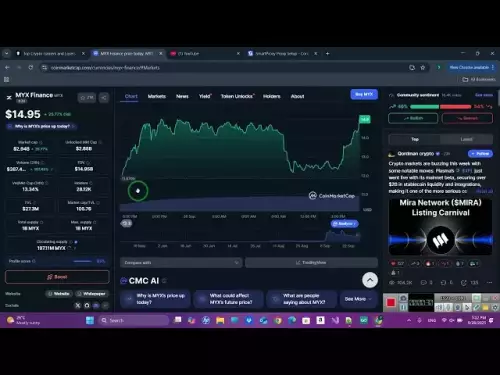-
 bitcoin
bitcoin $109547.008142 USD
0.04% -
 ethereum
ethereum $4011.838726 USD
-0.05% -
 tether
tether $1.000402 USD
-0.01% -
 xrp
xrp $2.798606 USD
0.88% -
 bnb
bnb $970.877944 USD
1.39% -
 solana
solana $202.237275 USD
-0.95% -
 usd-coin
usd-coin $0.999673 USD
0.00% -
 dogecoin
dogecoin $0.229294 USD
-1.15% -
 tron
tron $0.336370 USD
-0.45% -
 cardano
cardano $0.777260 USD
-1.66% -
 hyperliquid
hyperliquid $45.503019 USD
1.73% -
 ethena-usde
ethena-usde $1.000362 USD
0.01% -
 chainlink
chainlink $20.785303 USD
-1.10% -
 avalanche
avalanche $28.755822 USD
-0.11% -
 stellar
stellar $0.358303 USD
-0.48%
How do I send cryptocurrency to my Ledger address?
Always open the correct crypto app on your Ledger and verify the receiving address on-device to ensure safe, accurate transactions.
Sep 28, 2025 at 09:36 pm

Before sending any cryptocurrency to your Ledger device, ensure that the correct application (app) is open on your Ledger and that you are using a trusted interface such as Ledger Live or a verified decentralized wallet platform.
Sending Cryptocurrency to Your Ledger Wallet
1. Open the corresponding app on your Ledger device for the cryptocurrency you wish to send — for example, open the Bitcoin app when sending BTC, or the Ethereum app for ETH and ERC-20 tokens.
- Launch Ledger Live or connect your preferred wallet interface (e.g., MetaMask for Ethereum-based assets) and make sure your Ledger is properly recognized.
- Navigate to the “Receive” section in the interface, which will prompt your Ledger to confirm address generation.
- Verify the receiving address directly on your Ledger’s screen to ensure it matches the one displayed in the software — this step prevents malicious software from altering the destination.
- Once confirmed, share the verified address with the sender or initiate the transfer from your outgoing wallet.
Security Practices When Receiving Crypto
1. Always double-check the address shown on your Ledger hardware screen before confirming any transaction — this protects against man-in-the-middle attacks.
- Avoid copying and pasting addresses from untrusted sources; instead, use QR codes or manually verify long strings if necessary.
- Ensure your Ledger firmware is up to date to benefit from the latest security patches and compatibility improvements.
- Never disclose your recovery phrase and store it offline in a secure location — phishing attempts often target users during fund transfers.
- Use only official apps from Ledger’s catalog; third-party apps may compromise asset safety.
Handling Different Cryptocurrencies on Ledger
1. Each cryptocurrency requires its own app installed via Ledger Live — for instance, install Solana separately if you plan to receive SOL.
- Some tokens, like USDC or LINK, are built on specific blockchains — ensure you select the correct network (e.g., Ethereum, Polygon) when receiving them.
- Sending a token to an address on the wrong network (e.g., depositing an ERC-20 token into a BSC-only wallet) can result in permanent loss.
- For lesser-known altcoins, confirm Ledger supports the asset before initiating any transfer — unsupported coins won’t appear in your portfolio.
- If a coin isn’t supported natively, consider using a wrapped version or bridge service compatible with Ledger through decentralized applications.
Frequently Asked Questions
Can I receive multiple cryptocurrencies at the same address?No, each cryptocurrency uses a unique address format and derivation path. While some wallets display a single address for simplicity, Ledger generates different addresses per coin based on the active app.
What happens if I send crypto without opening the correct app on my Ledger?The transaction might not be recognized by Ledger Live, even though the funds arrive on the blockchain. Always open the relevant app so the wallet interface can detect incoming transactions correctly.
Is it safe to reuse a receiving address?While reusing an address doesn't compromise security directly, it reduces privacy. Each time you receive funds, generate a new address through the Receive flow to enhance anonymity.
Why doesn’t my balance show up after sending crypto to my Ledger?This may occur if the wrong network was selected, the app wasn’t open during receipt, or synchronization is delayed. Check the blockchain explorer with your public address to confirm the transaction landed on-chain.
Disclaimer:info@kdj.com
The information provided is not trading advice. kdj.com does not assume any responsibility for any investments made based on the information provided in this article. Cryptocurrencies are highly volatile and it is highly recommended that you invest with caution after thorough research!
If you believe that the content used on this website infringes your copyright, please contact us immediately (info@kdj.com) and we will delete it promptly.
- SUI, AAVE, BlockDAG: Decoding the Hottest Trends in Crypto
- 2025-09-29 06:45:13
- Snorter Bot: Your Ticket to 100x Crypto Presale Gems?
- 2025-09-29 06:25:16
- Crypto Casino Craze: Bitcoin Gambling & No Deposit Bonuses in 2025
- 2025-09-29 07:05:17
- Stellar Holds the Line: Fibonacci Levels, Breakout Potential, and XLM's Next Stellar Move
- 2025-09-29 06:45:13
- XRP Payments, Daily Wages, and Ripple Chief: A Revolution in Payroll?
- 2025-09-29 06:25:16
- Bitcoin, MAGAX, and the Surge: What Savvy Investors Are Eyeing Now
- 2025-09-29 07:05:17
Related knowledge

How do I view smart contract interaction history in Coinbase Wallet?
Sep 24,2025 at 01:36am
Accessing Smart Contract Interaction History in Coinbase Wallet1. Open the Coinbase Wallet application on your mobile device and log in using your cre...

How do I use the token swap feature in Coinbase Wallet?
Sep 24,2025 at 05:00pm
Understanding Token Swaps in Coinbase Wallet1. The token swap feature in Coinbase Wallet enables users to exchange one cryptocurrency for another dire...

How do I participate in governance voting in Coinbase Wallet?
Sep 25,2025 at 01:55pm
Understanding Market Volatility in the Crypto Space1. Cryptocurrency markets are known for their extreme price fluctuations, often driven by sentiment...

How do I set up a custom RPC node in Coinbase Wallet?
Sep 24,2025 at 12:00pm
Understanding Custom RPC Nodes in Coinbase Wallet1. A custom RPC (Remote Procedure Call) node allows users to connect their Coinbase Wallet to a block...

How do I manage multiple assets in Coinbase Wallet?
Sep 23,2025 at 10:00am
Understanding Multi-Asset Support in Coinbase Wallet1. Coinbase Wallet allows users to store a wide variety of digital assets beyond just Bitcoin and ...

How do I connect Coinbase Wallet to a hardware wallet?
Sep 26,2025 at 02:54am
Connecting Coinbase Wallet to a Hardware Device1. Open the Coinbase Wallet app on your mobile device and ensure it is updated to the latest version. N...

How do I view smart contract interaction history in Coinbase Wallet?
Sep 24,2025 at 01:36am
Accessing Smart Contract Interaction History in Coinbase Wallet1. Open the Coinbase Wallet application on your mobile device and log in using your cre...

How do I use the token swap feature in Coinbase Wallet?
Sep 24,2025 at 05:00pm
Understanding Token Swaps in Coinbase Wallet1. The token swap feature in Coinbase Wallet enables users to exchange one cryptocurrency for another dire...

How do I participate in governance voting in Coinbase Wallet?
Sep 25,2025 at 01:55pm
Understanding Market Volatility in the Crypto Space1. Cryptocurrency markets are known for their extreme price fluctuations, often driven by sentiment...

How do I set up a custom RPC node in Coinbase Wallet?
Sep 24,2025 at 12:00pm
Understanding Custom RPC Nodes in Coinbase Wallet1. A custom RPC (Remote Procedure Call) node allows users to connect their Coinbase Wallet to a block...

How do I manage multiple assets in Coinbase Wallet?
Sep 23,2025 at 10:00am
Understanding Multi-Asset Support in Coinbase Wallet1. Coinbase Wallet allows users to store a wide variety of digital assets beyond just Bitcoin and ...

How do I connect Coinbase Wallet to a hardware wallet?
Sep 26,2025 at 02:54am
Connecting Coinbase Wallet to a Hardware Device1. Open the Coinbase Wallet app on your mobile device and ensure it is updated to the latest version. N...
See all articles










































































